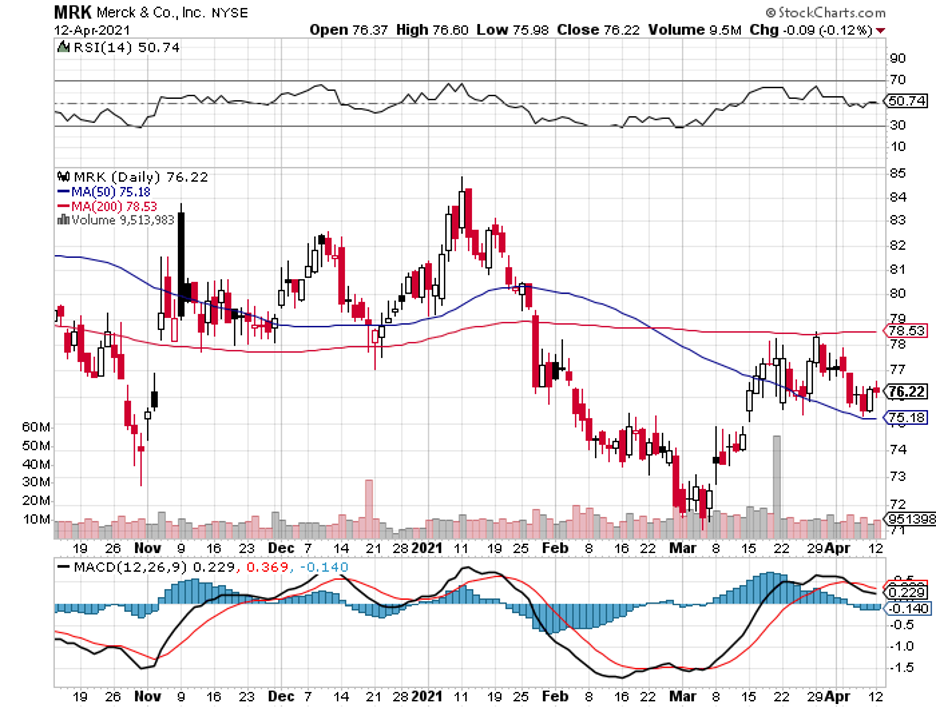Since the great 2007 financial crisis, many companies have been coping to recapture their former glory. The healthcare industry is not spared of this struggle.
This makes the continuous growth of Merck (MRK) all the more impressive, with the company reaching $195 billion in market capitalization and sustaining its rise for over 130 years.
Curiously, Merck’s share price is still in the mid-$70s.
Meanwhile, other large-cap biopharmaceutical companies that offer similar products and services are trading higher.
For instance, the share price for Abiomed (ABMD) is over $330 while Illumina (ILMN) is nearly $400, and Align Technology (ALGN) is at a whopping $600.
Like Merck, investors gravitate towards Abiomed, Illumina, and Align because of their capacity to generate long-term sustainable revenues and boost earnings.
Notably, though, none of them hold the same depth or even breadth of products and services that Merck offers.
Recently, Merck disclosed some of its initiatives to boost the company’s earnings in the near- and long term.
One of the most visible efforts is its collaboration with Johnson & Johnson (JNJ) to help with the manufacturing of JNJ-78436735, in which Merck received federal funding.
While JNJ is one of the biggest healthcare companies across the globe, with a market capitalization of roughly $425 billion, joining forces with Merck will substantially boost its vaccine manufacturing capacity.
For context, JNJ’s goal prior to Merck’s help is to deliver 100 million doses by the end of the second quarter of 2021.
With Merck’s assistance, JNJ can now realistically manufacture up to 3 billion doses in 2022 alone.
This means that JNJ can implement a massive vaccination drive in the next two years since its manufacturing capacity ensures that it can deliver shots to over one-third of the population.
This is obviously good news for everyone as it means that the virus will be contained, but the enhanced manufacturing capacity also means profit accretion for both JNJ and Merck.
This partnership with JNJ is possibly a key factor in Merck’s move to invest heavily in the vaccine business.
Merck recently announced its plans to allocate $20 billion to expand its global vaccine manufacturing network from 2021 to 2024. This would mean an annual investment of $5 billion.
Part of this global vaccine plan is Merck’s acquisition of Pandion Therapeutics (PAND) in 2020.
Another recent initiative of the company is its joint effort with Gilead Sciences (GILD) to develop long-lasting HIV treatments.
Gilead will be in charge of the US market, while Merck will handle the EU and the rest of the international markets.
For starters, the companies will focus on a combination of Merck’s Islatravir and Gilead’s Lenacapavir to create a long-lasting and well-tolerate HIV treatment.
Outside these partnerships, Merck has been working on strengthening its oncology segment.
In fact, its top-selling drug, Keytruda, can be used to medicate an extensive range of indications, which include colorectal, esophageal, and even lung cancers.
At this point, Keytruda is generating north of $16 billion in sales every year and exhibiting roughly 30% growth annually.
Since the drug continues to gain approvals for additional indications, it looks like its growth runway is definitely far from over.
Keytruda is poised to reach $24 billion in annual sales in a few years’ time, which puts it on track to become the best-selling drug in the world by 2023.
Although Keytruda will be under patent protection until 2028, Merck remains active in expanding its oncology pipeline.
By then, Merck is projected to have multiple immunotherapy staples in its portfolio not only derived from its own R&D but also via partnerships like its 2020 collaboration with Alkermes (ALKS) to work on an ovarian cancer study and Immunovaccine (IMV) to cooperate on a blood cancer study.
The total oncology market is estimated to be $200 billion annually, with over 30 million cases projected to be added by 2040.
Overall, Merck is a well-oiled company that continues to deliver good results thanks to strategic acquisitions and partnerships neatly tied up together in a particular domain.
While its rival biotechnology and pharmaceutical companies become hot properties in the market and pose higher price tags, Merck silently moves forward in the shadows of sustainability and familiarity.


